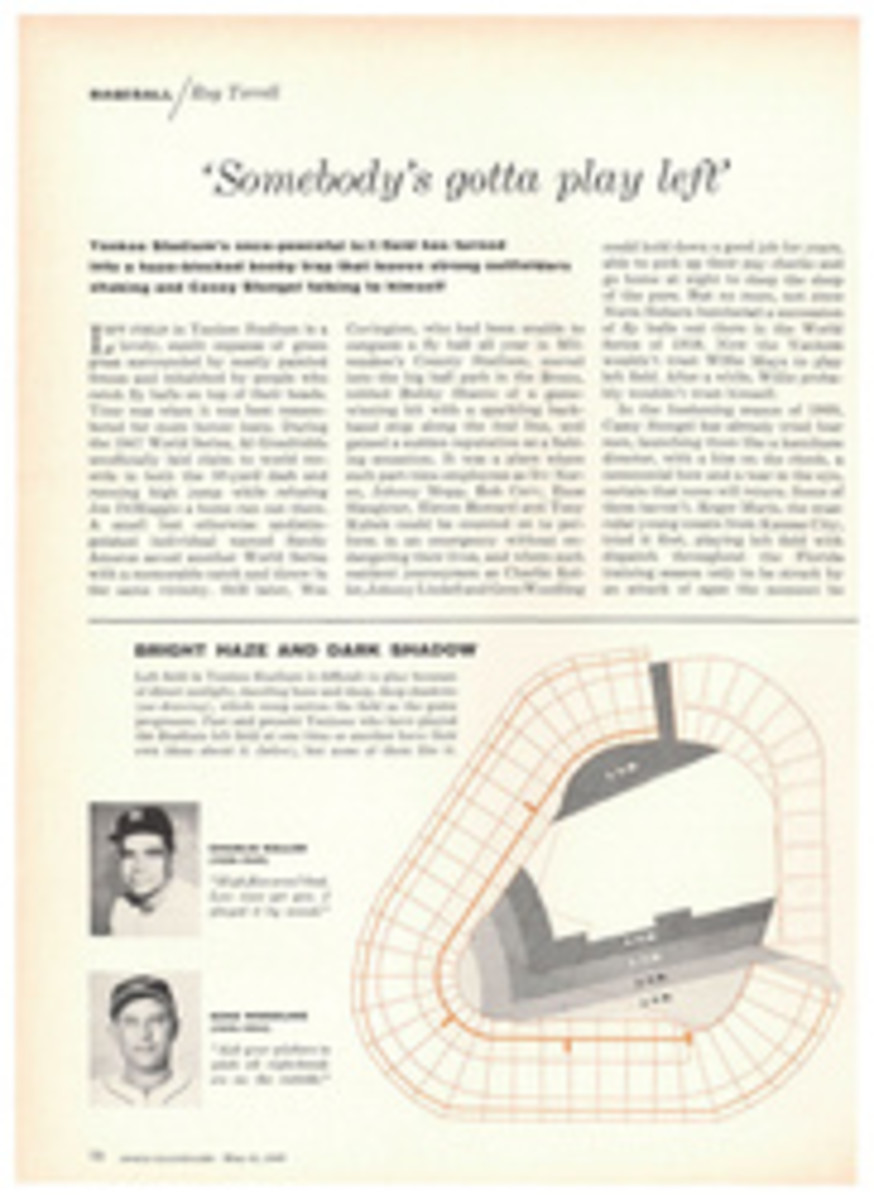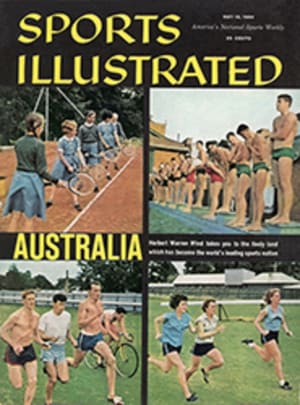
The crows lose one 233-0
There will be no further conversation," said Wendell Tesh, the leader of the crow hunting party, "from this point on."
Six of us were crowded into a station wagon that was rolling along a back road near the village of Poplar Branch on the seacoast of North Carolina about 25 miles north of historic Kitty Hawk.
We all nodded to Wendell, a tall, ruggedly built man wearing a tattered Marine Corps jacket and a green cap. He is the senior member and No. 1 caller of a group of North Carolina businessmen who have been crow hunting together every spring for seven years now. The group includes Tom Coppedge and Max Sessions, who, like Wendell Tesh, come from Winston-Salem, and Arnold "Sol" Tesh (no relation to Wendell), who is from Lexington, N.C. Also hunting this day was Max's brother Hoyt Sessions, visiting from Dallas, Texas. Though an experienced hunter, Hoyt had never shot crows before.
I was along as observer and non-combatant. I had been offered one of the 12-gauge shotguns but had declined for two reasons: 1) it was just possible that, in the excitement, I might wing a crow hunter instead of a crow, and 2) I am a secret admirer of crows.
My admiration for crows began when I read a line from Henry Ward Beecher which said, "If men had wings and bore black feathers, few of them would be wise enough to be crows." Elsewhere I had read about how crows post a sentry along roads like the one we were traveling to give the alarm if hunters appear. I had been convinced by old crow men that the birds speak an actual language of their own and hold meetings to discuss future movements and new ideas for bedeviling people, cats, horned owls, hawks and other of their foes. Crows have no friends.
Actually, despite my own admiration for them in their outwitting of humans (President Eisenhower tried calling them on his farm at Gettysburg and failed miserably), there is nothing really good to be said for crows. They ruin cornfields and rob birds' nests and eat the eggs. They kill birds and small chickens and will peck a cat to death sometimes. Down South they dig up peanuts. That is why farmers are overjoyed when crow hunters appear.
Our station wagon stopped at the edge of a wooded area adjoining a cornfield. We got out and closed the doors as silently as so many burglars. Sol Tesh brought out his battery-operated record player and some recorded crow calls he had bought from Abercrombie & Fitch in New York.
Everyone looked at Wendell Tesh for instructions. He headed into the woods and we followed him. When Wendell had found a spot to his liking, he directed us to our stations. I was put behind a tree, out of the line of fire. The others, all wearing variations of camouflage, were concealed in the undergrowth. Wendell moved off a few feet and signaled Sol Tesh to get his record player set up.
Four of the five hunters were to participate in the calling: Max Sessions, Sol Tesh, Tom Coppedge and, of course, Wendell himself. As a novice at crow shooting, Hoyt Sessions was disqualified; Tom Coppedge had had to serve a two-year apprenticeship before he was permitted to call. Now, nobody was to start calling until Wendell Tesh had set the theme with his 18-year-old caller, handmade by a certain Tom Turpin of Memphis, Tenn.
WHERE ARE THE CROWS?
I looked up at the sky through the trees and peered across the cornfield through the underbrush. There were no crows. There were no sounds of distant crows.
Then Wendell raised the crow call to his lips and began a quick, staccato caw-caw-caw—not quite a distress call (he told me later), but a kind of a "What-the-hell-is-going-on-in-here!" alert in crow talk. A moment later the record player started up with an unholy din of real-life crow calls: the fighting call, the come-on call, the crippled-crow call, the surprise call. Tom Coppedge added his English-made (and slightly English-accented) call; Max Sessions came in with his American-made call and then Tom Coppedge switched to his hawk call. The racket was ear-splitting.
Suddenly, across the cornfield, the crows started coming, racing over the treetops like strafing planes. They came from all directions: low-flying crows and the high-flying fish crows that make a specialty of stealing from seagulls along the Carolina seacoast. Overhead, a hawk appeared out of nowhere and hung over the treetops.
The shooting began, but there was no letup in the mechanical crow calling. Wendell Tesh would drop the crow call from his lips to shoot; then cradle his gun and resume calling almost without an interruption of his call. This was the important thing about it all; it was essential to keep the calls going or the crows would vanish with the first shot.
Everybody was shooting. Crows fell all around us. The hawk plummeted to earth. A crow fluttered down slowly and Sol Tesh dashed deeper into the woods to retrieve it: a crippled crow was a prime objective, for he would serve as a decoy at the next stand.
The crows seemed thoroughly bewildered by the expertise of the hunters; a novice never would have brought them in in the first place, and, in some parts of the country one shot will disperse them no matter how convincing the callers are. At last, the horrible truth dawned on the circling, diving birds: they had been had, tricked, booby-trapped. They took off.
A COLD, COLD LOOK
We drove at least three miles to the next stand to find another flock of crows that hadn't been informed of our activity in the neighborhood. Again conversation was shut off, again the station wagon doors were quietly closed. The crippled crow that Sol Tesh had retrieved was placed in the new cornfield and secured to a rock by an old boot lace.
I stood over the decoy and watched him peck patiently, trying to untie the knot of the lace on his leg. I stooped down and took a closer look at him. He stopped pecking and looked at me. It was a cold, not a frightened, look. It seemed to say something like, "Get lost, bud. I'll beat this rap."
Of course, he didn't. He just brought more crows into the trap when the calls began—at this second stand and at the third and the fourth. At the end, the score of the morning's competition between smart hunters and smart crows stood at 48 to 0 in favor of the hunters. Finally, the decoy himself was dispatched. With his passing, he raised the hunters' grand total (this was the third day of shooting) to 233 crows.
That evening Mrs. Bertha Gregory, who has the hunting and fishing lodge in Poplar Branch where we were staying, served a fine dinner of southern fried chicken. As we talked over the day's adventures, I still couldn't get that crippled decoy crow out of my mind. I secretly resolved to do something nice for the next crows I came across up North. It made me feel better and I passed my plate for seconds of chicken—about which I am not at all sentimental.
PHOTO
THE WINNING SIDE from left, includes Wendell Tesh, Max Sessions, Sol Tesh, Tom Coppedge. Coppedge had to wait two years for the right to use crow calls.
PHOTO
THE COMPLEAT CROWMAN, Sol Tesh, is equipped with recorded crow calls, camouflage outfit, repeating shotgun.

